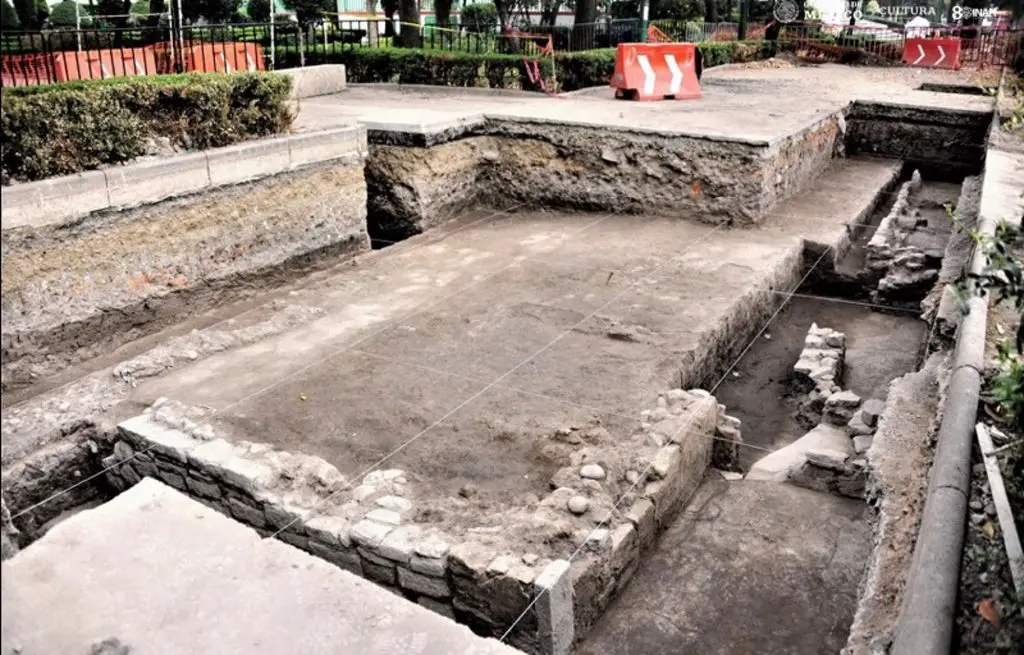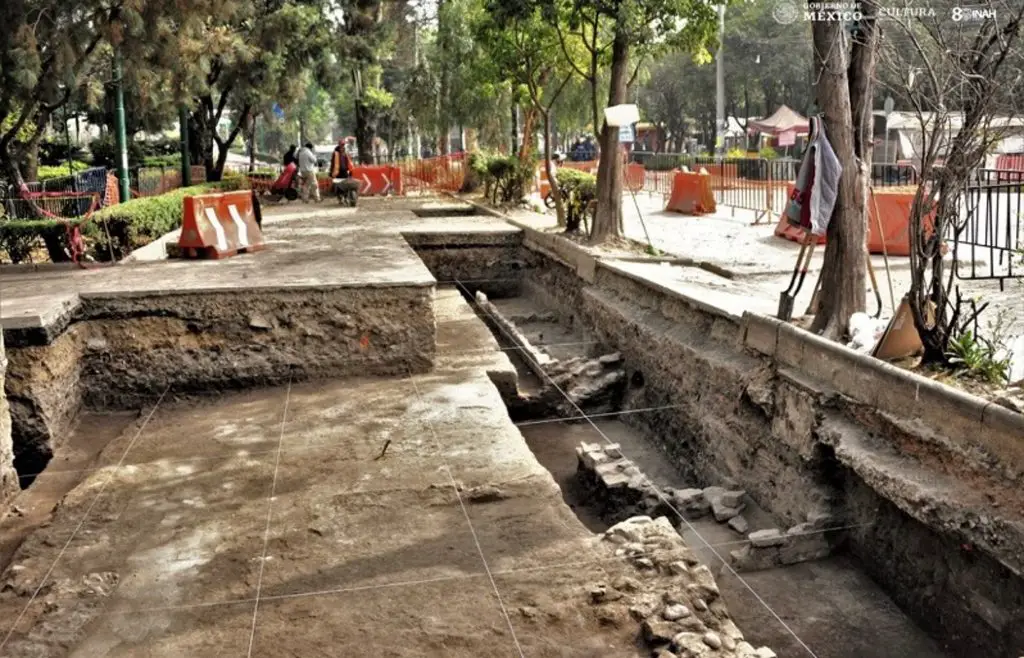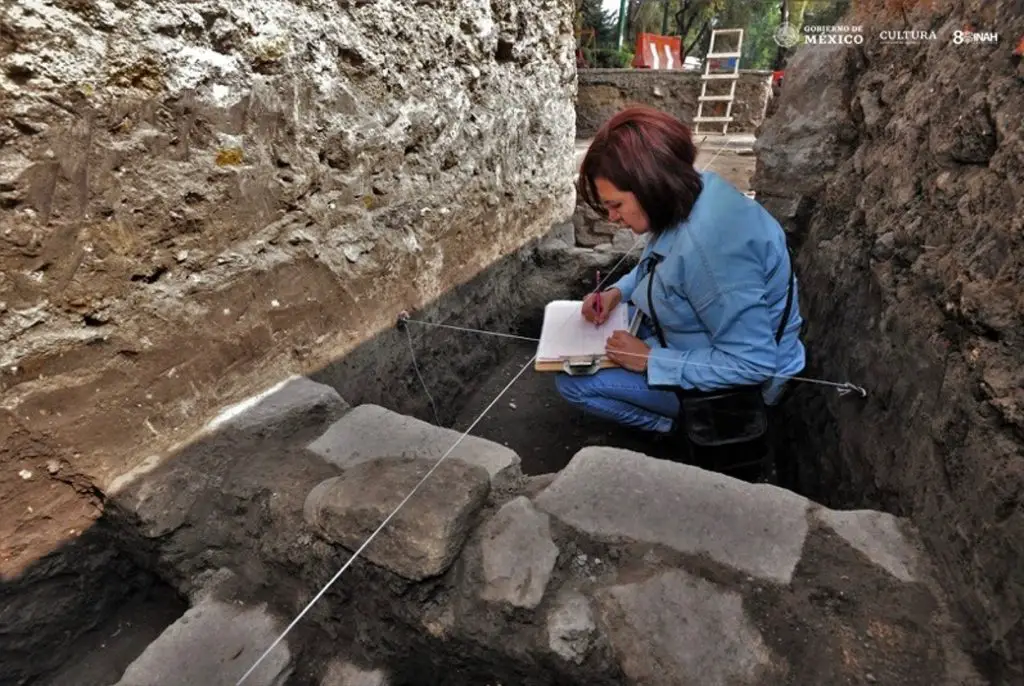Story By: Jonathan Macias, Sub Editor: Joseph Golder, Agency: Central European News
These are the foundations of a pre-Hispanic Aztec house which have been found in a municipality in Mexico City during maintenance work on a promenade.
The discovery took place on a promenade called Paseo de las Hormigas in the municipality of Azcapotzalco in the Mexican capital of Mexico City.

According to the Mexican National Institute of Anthropology and History (INAH), the foundations measure 6 by 8 metres (20 by 26 feet) and it is the largest pre-hispanic foundation to be dug up in the municipality.
The archaeological remains of the pre-Hispanic house are believed to be part of a larger neighbourhood that was part of Altepetl; the city-state which was the centre of the Aztec society in the pre-Columbian and Spanish conquest- era.
The INAH researchers believe there were two different municipalities in the Aztec times called Tepanecapan and Mexicapan ruled by a tlatoani (a high priest and military leader of his city-state).

The new foundation is believed to be part of the Mexicapan municipality.
According to local media, an archaeological team from the Archaeological Rescue Office (DSA) of the INAH is working together with the municipality to supervise the work on the promenade which is said to be of important archaeological value.
The promenade has been divided into 31 different sections measuring one by two metres (three feet by six feet) and the new foundations have been found in sections 1 and 2.
The foundations lie between 1.20 and 2 metres (four feet by six feet) deep and archaeologists have been able to dig up the walls of the house of between 50 and 70 centimetres (20 and 27 inches) high.

In the images, pottery found at the site along with the foundations can also be seen.
The house is thought to have been built in two different periods: the first one between 1350-1519 AD and the second one is still to be determined as experts are waiting for the results of the study of the materials.
Researcher Nancy Dominguez of the INAH told local media: “Our presence guarantees the integrity of the archaeological remains. Our task in the following week will be to verify or dismiss the existence of other archaeological remains in the area.
“The information that we gather from the archaeological sites in Azcapotzalco will allow us to solve the puzzle of how life was in the municipality in the pre-Hispanic era.”
The ViralTab page is created by and dedicated to professional, independent freelance journalists. It is a place for us to showcase our work. When our news is sold to our media partners, we will include the link here.



